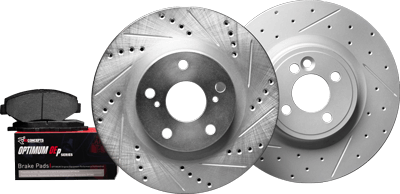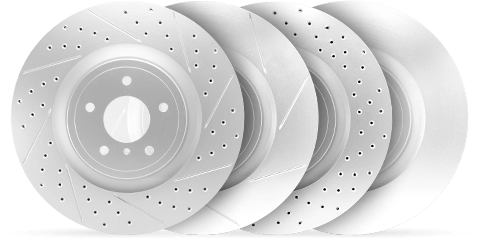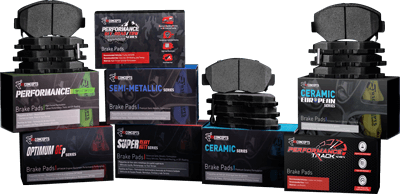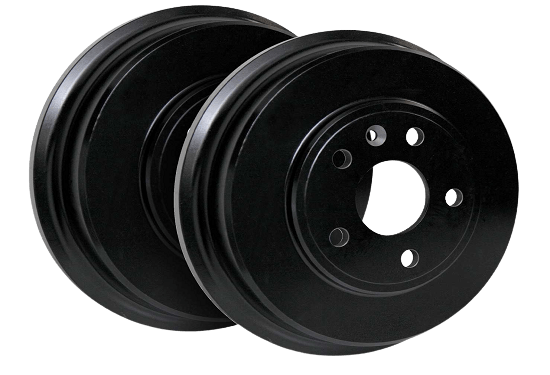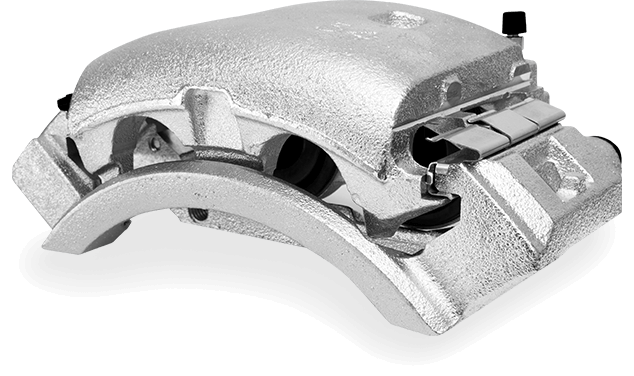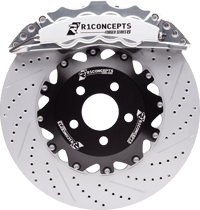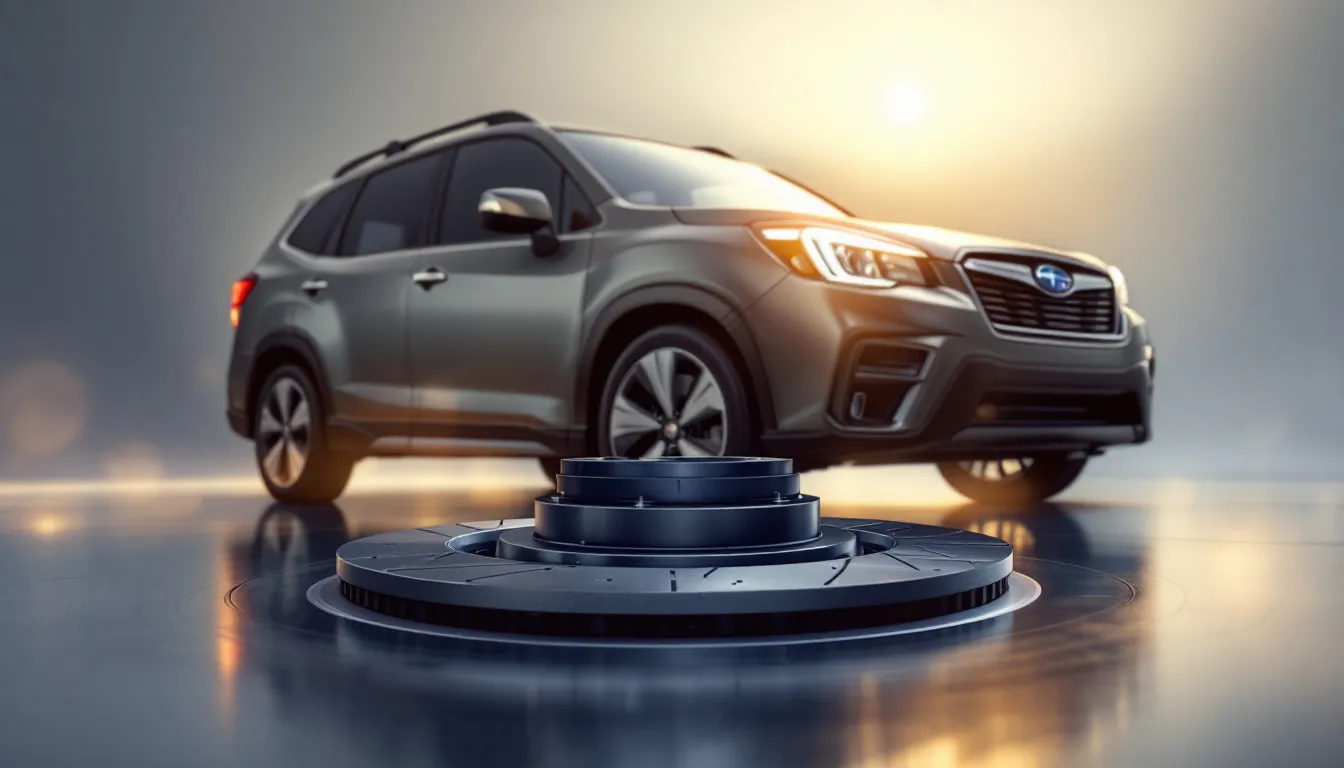
Are you looking to replace or upgrade the brake rotors on your 2018 Subaru Forester? This guide will help you understand everything from choosing the right 2018 Subaru Forester brake rotor types to recognizing signs of wear, and even installation tips.
Key Takeaways
Brake rotors are essential for converting kinetic energy into thermal energy, significantly impacting vehicle performance and safety.
Signs indicating the need for new brake rotors include pulsation in the brake pedal, unusual noises, and increased stopping distances.
Various brake rotor types, including carbon, zinc-coated, drilled & slotted, and blank, cater to specific driving needs, enhancing performance and reliability.
Understanding Brake Rotors
Brake discs, also known as brake rotors, are vital parts of a vehicle’s braking system. When paired with brake pads, they convert the car’s movement into heat through friction, helping the vehicle stop safely.
When you press the brake pedal, the pads press against the rotors, creating resistance that slows down the wheels and stops the car. The heat produced needs to be dispersed efficiently by the rotor to maintain effective braking, especially during intense driving.
Regularly checking your Forester’s rotors is important because their condition affects the car’s grip and safety. Look for signs like cracks, blue stains from heat, or ridges, which mean the rotors need attention.
Different rotor styles suit various needs: plain ones for everyday use, drilled for wet conditions, slotted for high-speed driving, and hybrids for mixed conditions. Knowing each type’s role helps keep your 2018 Subaru Forester running smoothly and safely.
Signs Your 2018 Subaru Forester Needs New Brake Rotors
To ensure your safety and the peak performance of your brake system, it’s crucial to be aware when it’s time to replace your brake rotors. If you feel a pulsating sensation in the steering wheel or brake pedal during braking, this may suggest that the rotors are warped or not uniform, hindering effective engagement with the brake pads.
Be on alert for abnormal sounds such as squeaks, clatters, or grinding coming from your brakes—these noises could mean that your rotors are worn out or damaged and should be looked at immediately. A noticeable increase in the distance required to stop can point towards reduced friction between the Subaru Forester’s genuine subaru brake pads and its rotor surfaces, which is detrimental for safe stopping capability.
Should you experience vibrations or shaking through either the vehicle itself or just via its brake pedal when applying brakes, these symptoms often imply imbalances within rotor surfaces. Such imbalance promotes premature wear on both genuine Subaru forester 2018 brake pads and other parts of their corresponding system.
For those driving a 2018 Subaru Forester, regular checks of your vehicle’s brakes will contribute significantly to maintaining safe operation. Promptly addressing any signs pointing toward rotor deterioration is essential. In case problematic indicators emerge, don’t hesitate seeking an expert evaluation — changing out faulty elements like deteriorated rotosrs helps uphold superior functioning breaks.
Types of Brake Rotors for 2018 Subaru Forester
Choosing the appropriate brake rotors for your 2018 Subaru Forester is contingent upon your driving patterns, environmental conditions, and unique requirements. Various rotor types are on offer, providing distinct advantages in terms of performance.
Key variations encompass carbon brake rotors, zinc-coated ones, as well as drilled & slotted variants and blank brake rotors. Understanding the benefits that each kind presents can guide you to select the most suitable option for dependable operation and safety while driving your Subaru.
Carbon Brake Rotors
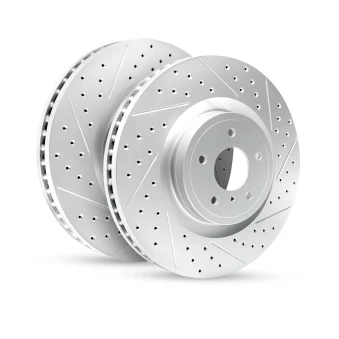
Brake rotors crafted from carbon material are renowned for their superior quality and longevity, a trait that serves various driving scenarios well. The increased friction provided by these rotors leads to heightened stopping power and prompt responsiveness, offering drivers enhanced control and peace of mind during urgent braking instances.
For those who favor off-road adventures, carbon brake rotors for 2018 Subaru forester proves to be an excellent match due to their robust performance under stress. They possess the resilience required to cope with intense heat and pressure associated with challenging terrains while maintaining top-notch braking capabilities.
These types of rotors ensure a steady braking experience suitable for any vehicle model. Drivers can count on them whether tackling tough off-road courses or maneuvering through city streets. By choosing high-grade carbon brake rotors for your 2018 Subaru Forester, you upgrade the effectiveness and safety features within its brake system.
Zinc Coated Brake Rotors
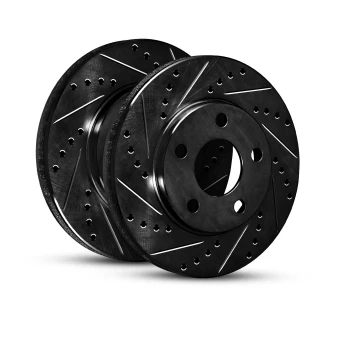
Zinc-coated brake rotors for 2018 Subaru Forester are particularly advantageous, especially in areas prone to severe weather. The zinc serves as a defensive barrier against environmental factors, significantly extending the life of your vehicle’s rotors by warding off corrosion and diminishing wear.
The addition of a zinc coating on brake rotors also has the advantage of creating less noise during braking, contributing to a more serene driving experience. For those who value peace and quiet while behind the wheel, these rotors can offer an upgrade in comfort levels when operating their Subaru Forester.
Initially presented with a full silver zinc finish covering them completely, these advanced brake rotors undergo natural wear on their surface layer after first being used. Despite this initial wear away at points where friction occurs during stopping actions, vital regions such as the hub area and inner vanes remain protected from rust over time due to persistent coverage there.
In summary, fitting your 2018 Subaru with zinc-coated brake rotors not only improves its longevity but also elevates driving pleasure through quieter operation. Moreover, it assists in keeping wheels clean — enhancing both performance dynamics associated with stopping efficiently and maintaining an aesthetically pleasing aspect for your prized forester vehicle.
Drilled & Slotted Brake Rotors
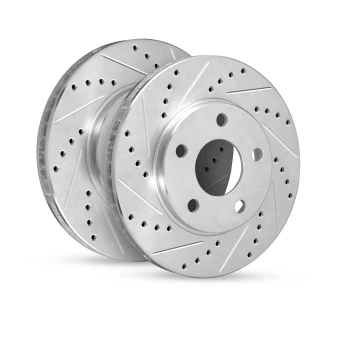
The drilled and slotted brake rotors for 2018 Subaru forester offers improved performance by efficiently dissipating heat and reducing the occurrence of brake fade under strenuous conditions. The strategically placed holes allow for quicker release of heat, while the slots aid in expelling water and debris to bolster braking capabilities in inclement weather. Their suitability for demanding scenarios such as racing on a track or hauling heavy loads is enhanced.
By facilitating the escape of water, these rotors amplify friction which ensures more reliable stopping power even when driving through wet environments. They help maintain uniform pad wear thanks to their combined drilled and slotted characteristics, leading to quieter brakes with an extended service life. The presence of a double disc grind on the surface where the pads make contact Augments this effect by delivering a smoother stop that feels consistent each time.
For those seeking top-notch high-performance brake rotors, consider investing in R1 GEO Carbon Series Drilled & Slotted Brake Rotors known for their meticulous engineering. These are crafted not only for routine street travel but also excel during competitive track events, adventurous off-road experiences or while pulling substantial payloads behind you — they’re versatile enough to handle it all with ease due primarily to zinc plating which prevents corrosion thus preserving both looks and longevity while keeping upkeep costs down.
Tailored specifically for your 2018 Subaru Forester’s rear wheels are R1 eLINE Silver Series Drilled & Slotted Brake Rotors that guarantee elevated stopping efficiency critical for ensuring safety within your vehicle’s operations. Available as a complete set comprising four units designed as part of an overarching scheme aimed at heightening overall braking system performance throughout your Subaru Forester.
Blank Brake Rotors
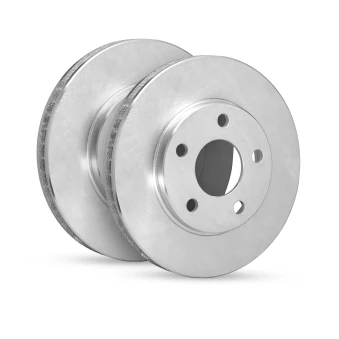
The blank brake rotors for Subaru forester is known for its uncomplicated nature, delivering steady performance that’s well-suited to day-to-day travel. These rotors are preferred by those who value functionality over complexity, offering a robust solution for regular driving conditions. For individuals seeking an unfussy and dependable braking experience, they stand out as the go-to option.
Featuring a uniform surface ideal for braking purposes, these rotor types reduce both noise and vibration when decelerating. This characteristic makes them particularly comfortable for use in city or suburban settings where stops are more frequent. Their straightforward configuration simplifies replacement procedures and ongoing upkeep—making them a financially savvy choice when dealing with normal brake system maintenance.
For owners of the 2018 Subaru Forester who require solidly-performing brakes without unnecessary complications or expenses associated with intricate designs, blank brake rotors fit perfectly into their needs. These parts play an integral role in ensuring consistent safety each time the vehicle comes to a halt—a key aspect of preserving the integrity of your Subaru’s stopping capabilities.
Installation Guide for 2018 Subaru Forester Brake Rotors
If you are inclined to undertake a do-it-yourself endeavor, fitting new brake rotors on your 2018 Subaru Forester can be quite satisfying. Make sure you’re fully prepared before commencing the task by assembling all required instruments, such as safety glasses for eye protection against hazardous substances like brake cleaner, along with a C-clamp, torque wrench and said cleaner.
To begin with the installation process, first elevate and stabilize your vehicle using appropriate jacks and stands. Subsequently remove the wheels to gain access to the brakes of your Subaru. Utilize the C-clamp for retracting the pistons in order to make space available for installing fresh rotors. It’s imperative that any accumulated rust or grime is thoroughly cleaned from both calipers and their adjacent areas before mounting new rotors so as to guarantee flawless fitment and functionality.
Adherence to manufacturer-specified torque values when securing new components is critical. Deploy a torque wrench in fastening bolts according precisely aligned settings specific for your 2018 Subaru Forester’s design—the details of which could potentially be found within dedicated repair manuals or instructional videos curated exclusively around this model year of your Forester.
Following successful installment, ensure that you test out braking capacity at reduced velocities verifying operability post-replacement tasks completion. It’s equally vital bedding in newly added rotor-and-pad combination through progressive engagement procedures—these include incremental stoppage actions intended at enhancing friction efficiency between recent elements implemented henceforth facilitating smooth cooperative operation among them within overall brake system framework.
Maintenance Tips for Brake Rotors
Ensuring the durability and peak functioning of your brake system requires attentive care of your brake rotors. To stave off rust and decay that can degrade braking capability, it’s vital to clean the rotors periodically. While driving your 2018 Subaru Forester may scrape away light surface rust on the rotors, a comprehensive cleaning is achievable by detaching them from the vehicle.
Should you opt to clean the rotor parts while they’re attached to your Subaru, employing a brake cleaner or gentle detergent will serve this purpose but might not reach deeper grime as effectively as removal would allow. For intensive purification efforts, immersing rotors in white vinegar proves an efficient tactic for stripping away corrosion with little exertion required. Ensuring moving components like caliper pins are well lubricated amplifies both functionality and longevity of the entire braking apparatus.
Zinc-coated options present additional advantages. Their propensity for less brake dust creation and quieter operation translates into fewer washes needed for wheels—and ultimately—a neater appearance over time. With consistent upkeep coupled with appropriate handling techniques applied specifically towards these crucial elements within its construction, your 2018 Subaru Forester’s brakes stand poised to provide steadfast service throughout many journeys ahead.
Cost of Replacing Brake Rotors
The process of replacing brake rotors on a 2018 Subaru Forester is vital for maintaining the effectiveness and safety of your vehicle’s brake system. The expense associated with this repair can range broadly from $950 to $1,300, influenced by factors including the choice of rotor parts, labor fees, and any other necessary repairs that might be required.
It is advisable to factor in the enduring advantages of selecting high-caliber brake rotors when planning for replacement costs. Despite potentially higher upfront expenditures, superior quality rotors tend to offer enhanced performance and durability as well as increased safety benefits. This investment may lead to reduced future expenses related to ongoing maintenance or premature replacements.
Keeping your Subaru Forester’s braking system functioning properly is imperative for preserving both performance and security standards within your vehicle. By gaining an awareness of related costs and making educated choices about these repairs, you will be able to competently navigate through this crucial aspect of vehicular upkeep.
Summary
Ensuring that you select the appropriate brake rotors for your 2018 Subaru Forester is essential to maintain dependable performance and safety. Comprehending the core role of brake rotors, identifying when they begin to show wear, picking out suitable rotor types, and adhering to correct installation and upkeep processes are all critical in upholding the braking efficiency of your vehicle.
For those who engage in off-roading or challenging driving scenarios, carbon brake rotors are highly recommended due to their superior friction capabilities and robustness. In contrast, zinc-coated rotors excel in offering resistance against corrosion along with reduced noise levels. These qualities make them an optimal choice for areas prone to severe weather conditions. Drilled & slotted rotors offer improved high-performance features by facilitating better heat dispersion and enhanced wet-weather stopping power. Conversely, blank rotors deliver steadfast results for everyday travel due to their simple yet effective design.
It’s crucial that regular servicing and prompt replacement of worn-out brake components be undertaken so as not leave any aspect unattended which could otherwise compromise your 2018 Subaru’s braking system effectiveness over time. Committing yourself fully toward procuring premier quality brakes will help preserve both operational excellence as well as longevity while assuring perpetual safeguarding during every journey made within this automobile variant.
Frequently Asked Questions
What are the signs that my 2018 Subaru Forester needs new brake rotors?
If your 2018 Subaru Forester makes unusual noises, experiences vibrations in the brake pedal or steering wheel, or has increased stopping distances, it likely needs new brake rotors.
Addressing these signs promptly will ensure your vehicle remains safe on the road.
What are the benefits of zinc-coated brake rotors?
Brake rotors with a zinc coating offer enhanced resistance to corrosion and protection against wear, which leads to reduced brake dust accumulation and quieter operation.
Such rotors are especially advantageous in preserving peak braking performance under harsh weather conditions.
How do I install new brake rotors on my 2018 Subaru Forester?
To install new brake rotors on your 2018 Subaru Forester, lift the vehicle, remove the wheels, push back the brake pistons with a C-clamp, clean the calipers, install the new rotors, and tighten all bolts to the manufacturer’s specifications using a torque wrench.
This process ensures proper installation and optimal braking performance.
What are the cost implications of replacing brake rotors?
Replacing brake rotors typically ranges from $950 to $1,300, influenced by factors such as the vehicle model, parts quality, labor rates, and any necessary repairs.
It’s essential to budget accordingly to avoid unexpected expenses.
How can I maintain my brake rotors to ensure longevity?
To ensure longevity of your brake rotors, regularly clean them to prevent rust, lubricate caliper pins, and consider using zinc-coated rotors to minimize brake dust and noise.
Implementing these practices will significantly enhance their lifespan.


